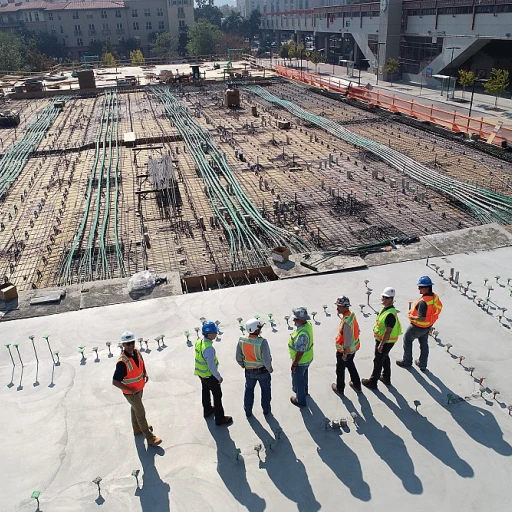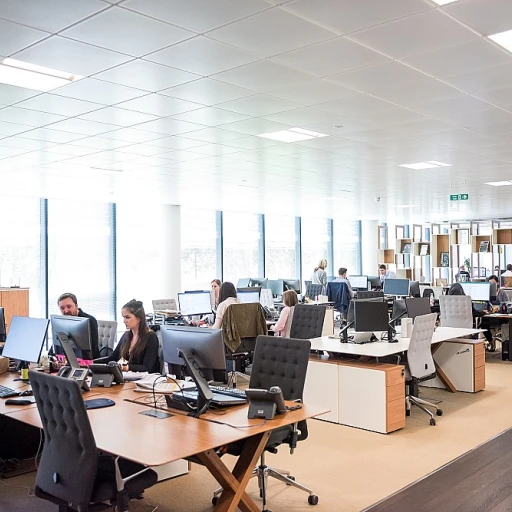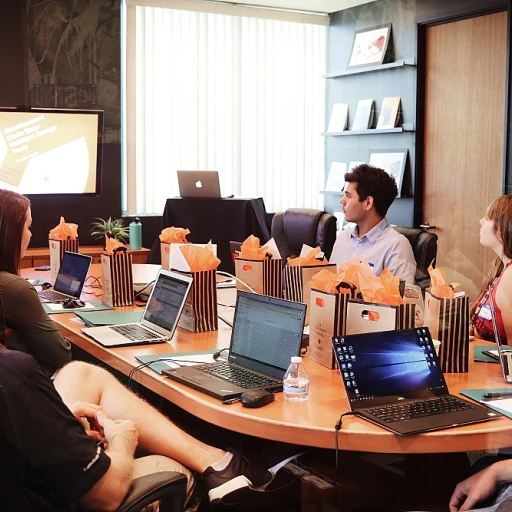
Understanding the Role of Performance Management in Employee Retention
The Significance of Performance Management in Retaining Employees
Performance management plays a pivotal role in maintaining a satisfied and productive workforce. As companies strive to retain their top performers, performance management systems provide a structured approach to track, evaluate, and improve employee performance over time. This holistic approach not only aids in goal setting and tracking, but also ensures continuous feedback, which is crucial for employee engagement and career development.
Effective performance management systems are designed to meet various objectives, such as streamlining performance reviews and supporting managers in developing their teams. These systems enhance real-time feedback and regular check-ins, allowing managers to quickly address concerns and celebrate achievements. By reinforcing continuous feedback, these systems help employees navigate their development paths, aligning personal goals with organizational objectives.
Furthermore, performance management software offers data-driven insights that are invaluable for both employees and employers. By analyzing performance data, managers can pinpoint areas needing improvement and identify best practices, ensuring efficient resource allocation and personalized development plans. This approach not only motivates employees but also builds trust and transparency within the company.
For companies looking to integrate advanced performance management solutions, it is essential to consider how these systems work in concert with existing HR tools. Such integration ensures seamless communication, optimizing time and resources for the best possible outcomes in employee performance and retention. For further insights on how to enhance employee retention with effective solutions, visit this resource focused on comprehensive HR strategies.
Key Features to Look for in Performance Management Software
Essential Functionalities to Enhance Employee Engagement
To maximize employee retention, selecting the right performance management software is crucial. The best solutions don't merely automate tasks but actively contribute to fostering a thriving work environment. Let's dive into key features that should be present in a robust performance management system.
Continuous Feedback and Performance Tracking
An essential characteristic of effective software is its ability to support continuous feedback. Unlike traditional annual or bi-annual reviews, ongoing performance reviews provide real-time insights into employee performance. This approach ensures that feedback is timely, relevant, and actionable. Employees feel more engaged when they receive constructive feedback frequently, which aids in their career development.
Goal Setting and Alignment
Effective performance management software should facilitate robust goal setting and alignment. By allowing managers and employees to collaboratively set and track goals, these systems help ensure that individual objectives are aligned with overarching company goals. This promotes accountability and drives an organization-wide focus on achieving key performance indicators.
User-Friendly Interface for Increased Accessibility
User experience plays a significant role in the effectiveness of any software. For performance management systems, intuitive interfaces are not just nice to have; they are critical for encouraging adoption by employees and managers alike. A user-friendly interface ensures all team members, regardless of technical skill, can easily navigate the system, input data, and review performance metrics efficiently.
Integration with Existing Systems
Integrating performance management systems with existing HR systems streamlines processes, reduces administrative burdens, and enhances data accuracy. This integration should include seamless data flow between different platforms, which minimizes errors and maximizes efficiency. Understanding the diverse profiles of workers, as detailed in related resources, also plays a key role in effectively leveraging these systems.
Developmental Goal Support
Finally, supporting developmental goals is a crucial feature. Performance management systems should foster an environment where employees can pursue personal and professional growth, ultimately enhancing employee retention. For more details on setting and achieving developmental goals, consider exploring examples of developmental goals that can be integrated into performance reviews.
Comparing Leading Performance Management Software Options
Choosing the Right Performance Management Software for Your Company
Evaluating the top-performing management software solutions is critical for enhancing employee retention in any company. Managers often find themselves overwhelmed when deciding which software best aligns with their organization's needs. Here, we discuss evaluating different options and what to consider during this process.
Before choosing management software, assess your company's specific needs and goals. Define the areas of employee performance and engagement that require improvement. Determining priorities will help your team select software that targets these areas effectively.
Evaluating Performance Management Software Options
When considering different software options, explore features such as continuous feedback, performance reviews, and goal tracking. These tools play a pivotal role in employee development and satisfaction. Software that supports real-time performance feedback enables employees to improve continuously through meaningful insights.
- Continuous Feedback: A robust feedback system allows managers to provide timely insights into employee performance, enhancing development opportunities and helping set realistic goals.
- Goal Setting and Tracking: Effective management software includes goal-setting tools that are crucial for aligning employee objectives with company goals, facilitating regular check-ins and progress tracking.
- Integration Capability: Ensure the software can seamlessly integrate with existing HR systems. This integration streamlines processes and data management, saving time and enhancing efficiency.
- User Experience and Customer Service: Consider software with user-friendly interfaces and reliable customer support. Look for reviews from other companies to gauge the software’s effectiveness and support quality.
Remember that the best management systems not only address current challenges but also allow your company to scale and adapt to future needs. By incorporating insights and gathering data effectively, you position your organization for long-term success in employee retention.
Integrating Performance Management Software with Existing HR Systems
Effective Software Integration Strategies
Integrating performance management software with existing HR systems is a crucial step for organizations aiming to streamline operations and enhance employee engagement. This integration facilitates seamless data flow, enabling better tracking of employee performance and more efficient goal setting. One of the best practices in integrating management software is ensuring compatibility with current HR systems. Companies should perform a thorough analysis of their existing platforms to identify any potential overlaps or conflicts in functionalities. This minimizes disruptions and enhances the efficacy of both systems. Choosing the right software that aligns with your organization's pre-existing infrastructure is vital for maintaining operational consistency.Ensuring Data Integrity and Security
Another critical aspect of integration is maintaining data integrity and security. As organizations utilize performance management systems for employee feedback and reviews, the security of sensitive employee data must be prioritized. Implementing robust security protocols during the integration phase helps in safeguarding data from breaches. Companies can also take advantage of software that offers real-time tracking and analytics. This feature provides managers with valuable insights into employee development, enabling them to make informed decisions and set meaningful goals. Such insights can be pivotal in driving career development and enhancing employee performance.Maximizing Employee Engagement Through Integration
Effective integration of performance management software with HR systems doesn't just benefit management. It also enhances employee experience. Employees appreciate the transparency and consistency brought by these integrated systems, especially when it comes to performance reviews and continuous feedback. By streamlining processes through software integration, companies create an environment where employees can focus more on their work, knowing that their performance is accurately tracked and evaluated. This fosters a culture of trust and commitment, ultimately contributing to improved employee retention. Overall, the integration of performance management software with HR systems needs careful planning and execution. It demands attention to compatibility, data security, and employee engagement, ensuring that all aspects work harmoniously to support an organization’s objectives.Case Studies: Success Stories in Employee Retention
Real-World Success with Performance Management Software
Performance management software has played a pivotal role in improving employee retention across various industries. Understanding these successful implementations can provide valuable insights into best practices. One prominent case showcases a leading tech company that overhauled its performance review system. They integrated a comprehensive management system that emphasized continuous feedback. By making real-time adjustments, they ensured their employees received constructive insights regularly. This shift from annual reviews to frequent check-ins significantly enhanced employee engagement and satisfaction, reducing turnover rates. Another case involves a customer service organization that focused on goal tracking. They adopted software performance tools to align individual goals with company-wide objectives. Managers could easily track progress towards these goals, making it simpler to identify and support career development opportunities. The result was a more motivated team with a clear path for growth, leading to improved employee loyalty and reduced attrition. A third example highlights a multinational corporation utilizing data-driven approaches. By employing a sophisticated performance management system, they gathered insightful data on employee performance and identified areas needing improvement. This data-supported approach allowed for tailored development plans, ensuring that employees' needs and aspirations were accounted for. The positive reviews from employees underscored the effectiveness of their management software. These cases illustrate that integrating goal setting, continuous feedback, and real-time tracking into a cohesive performance management strategy can yield substantial benefits. As companies continue to refine their systems and learn from each other, managers can expect even greater improvements in employee performance and retention.Future Trends in Performance Management Software
Emerging Innovations in Performance Management Tools
Performance management software continues to evolve, shaping the way companies approach employee feedback and engagement. As organizations adapt to new work environments and business models, several trends are emerging in the development of these systems.- Real-Time Feedback Mechanisms: Traditional performance reviews are being supplemented or replaced by continuous feedback loops. This approach enhances transparency and allows employees to receive constructive input at any stage of their projects, leading to improved work satisfaction and productivity.
- Data-Driven Insights: Advanced analytics and machine learning are being integrated into performance management software to provide actionable insights. These tools help managers track employee performance and identify patterns in behavior, enabling a proactive approach to career development and goal setting.
- Goal Alignment Techniques: New strategies in goal tracking are focused on aligning individual and team objectives with corporate goals. This ensures that all employees are working towards common purposes, reducing discrepancies and increasing overall company performance.
- Enhanced User Experience: A more intuitive and user-friendly management system encourages employees and managers to engage with the software. Modern platforms are prioritizing seamless integration with existing HR systems and efficient navigation to optimize time management.
- Customization and Flexibility: Organizations are seeking performance management tools that can be tailored to specific industry needs and company culture. This customization ensures more relevant check-ins and goal reviews.
- Integration with Career Development: Future-focused systems are linking performance management with career progression opportunities. This optimizes both employee satisfaction and retention rates by encouraging continuous development and growth.












